GARDENING IN HARMONY WITH NATURE IN THE NORTHEAST
Woodland Groundcovers
Starting a large woodland garden does not have to be daunting. Key to success is choosing a limited set of vigorous native woodland plants that spread quickly, suppressing weeds and providing beautiful structure to the herbaceous layer. Add as much organic matter in the form of composted leaves (leaf mold) or general compost as you possibly can, and “think big” by giving each species a lot of space to cover.
Limit the choice of these massed plants to around 10 species, so that each can dominate large drifts. Interesting combinations naturally occur where the different patches meet and species intermingle. Accent plants (larger or clump-forming woodland plants) can later be added within the drifts. The possibilities to experiment with beautiful combinations are endless …
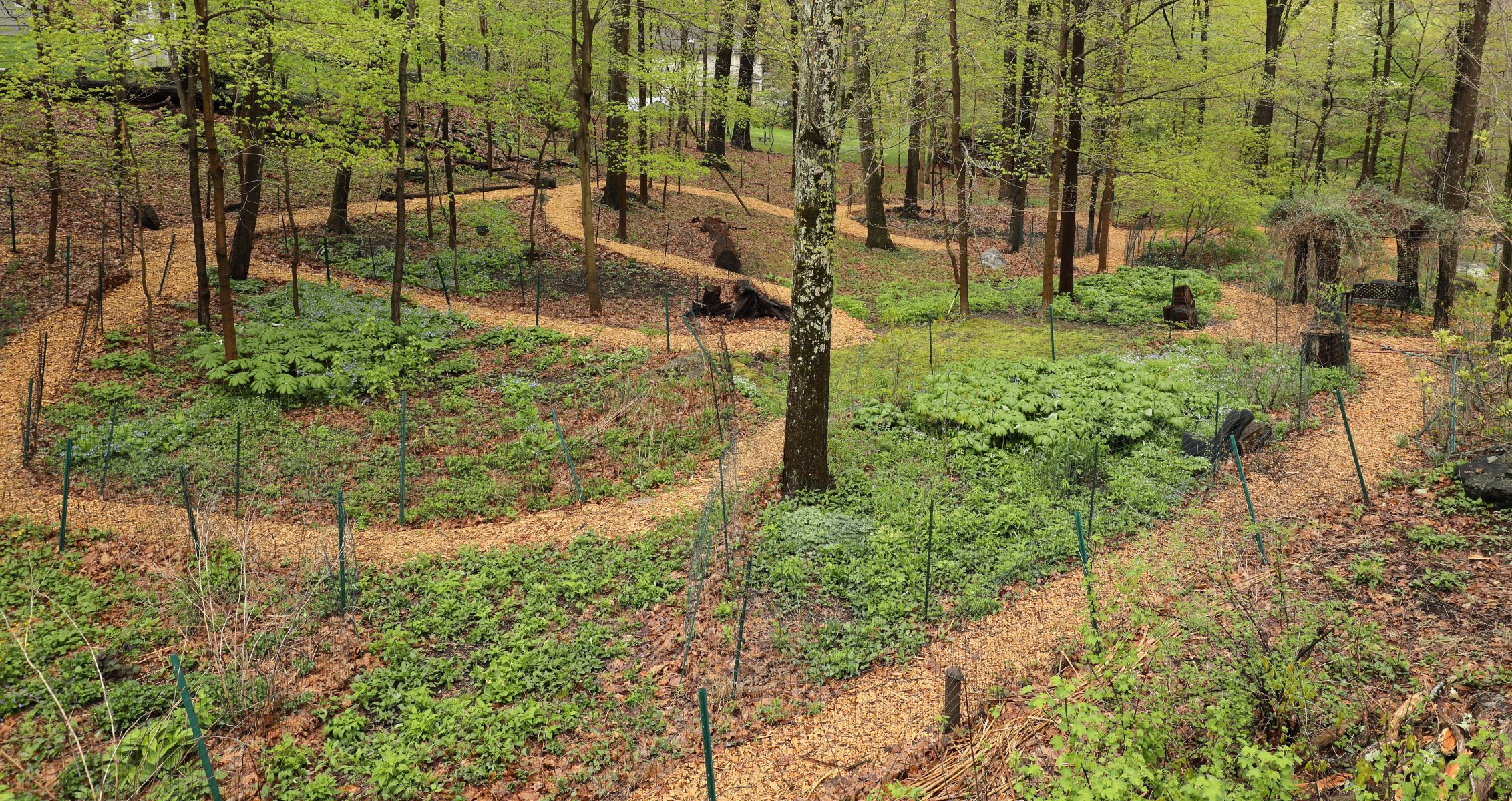
In this post, you will find our favorite 10 species of native woodland plants for massing. We are not including the incredible native ferns or native sedges here, because they deserve their own pages. Many of them can and should also be used in this massed fashion as “backbone” plants.
And our favorites are:

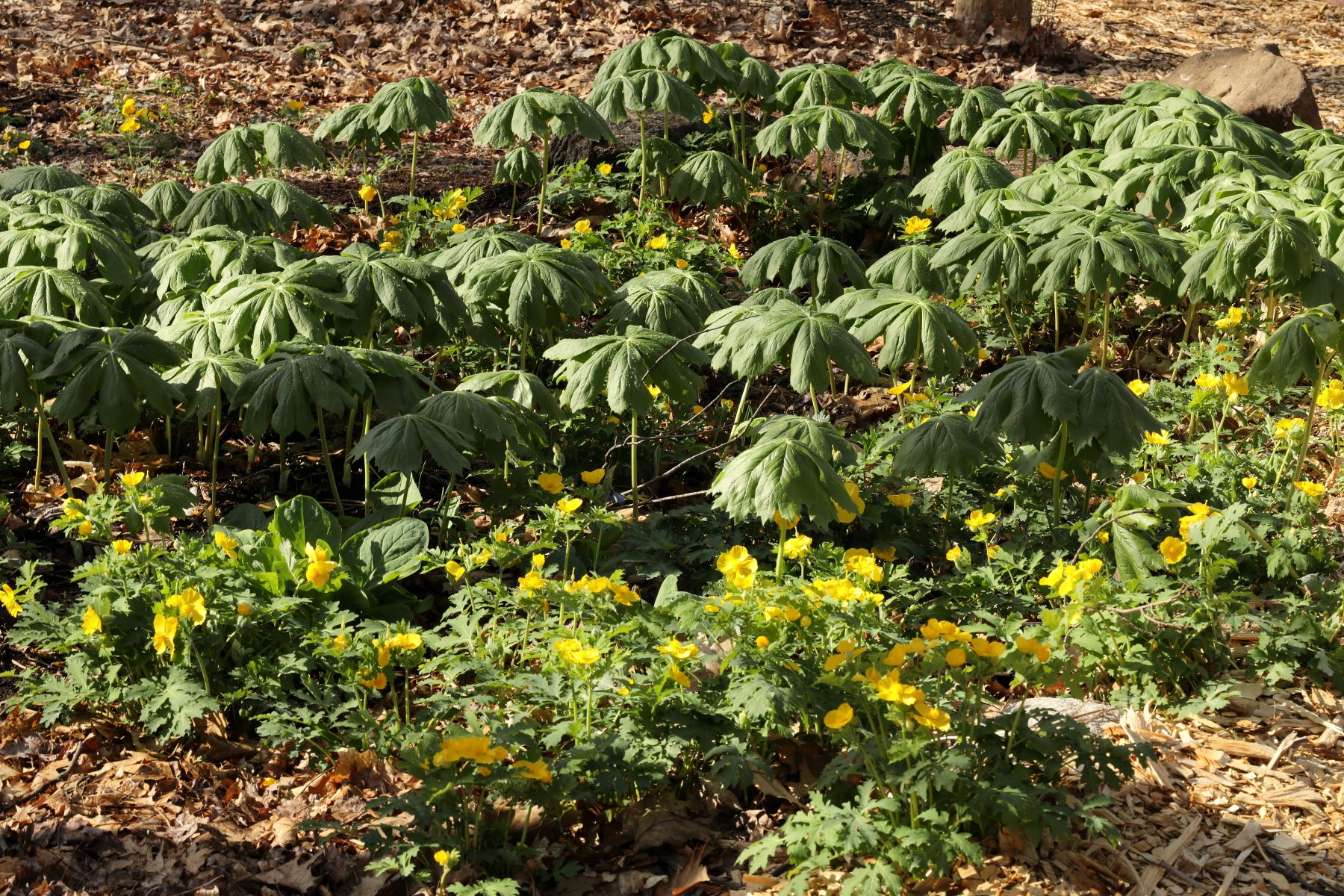
Virginia Bluebells
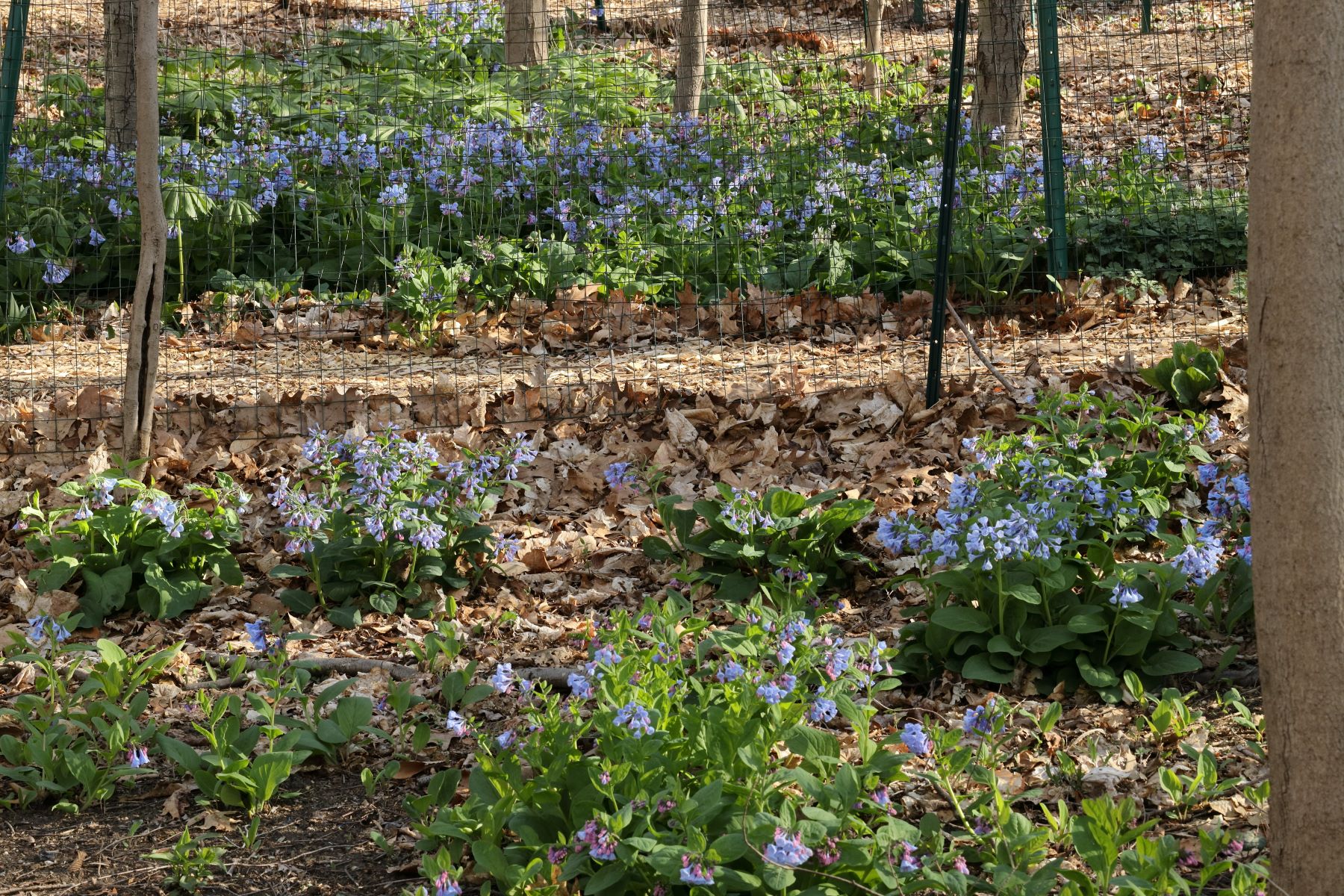
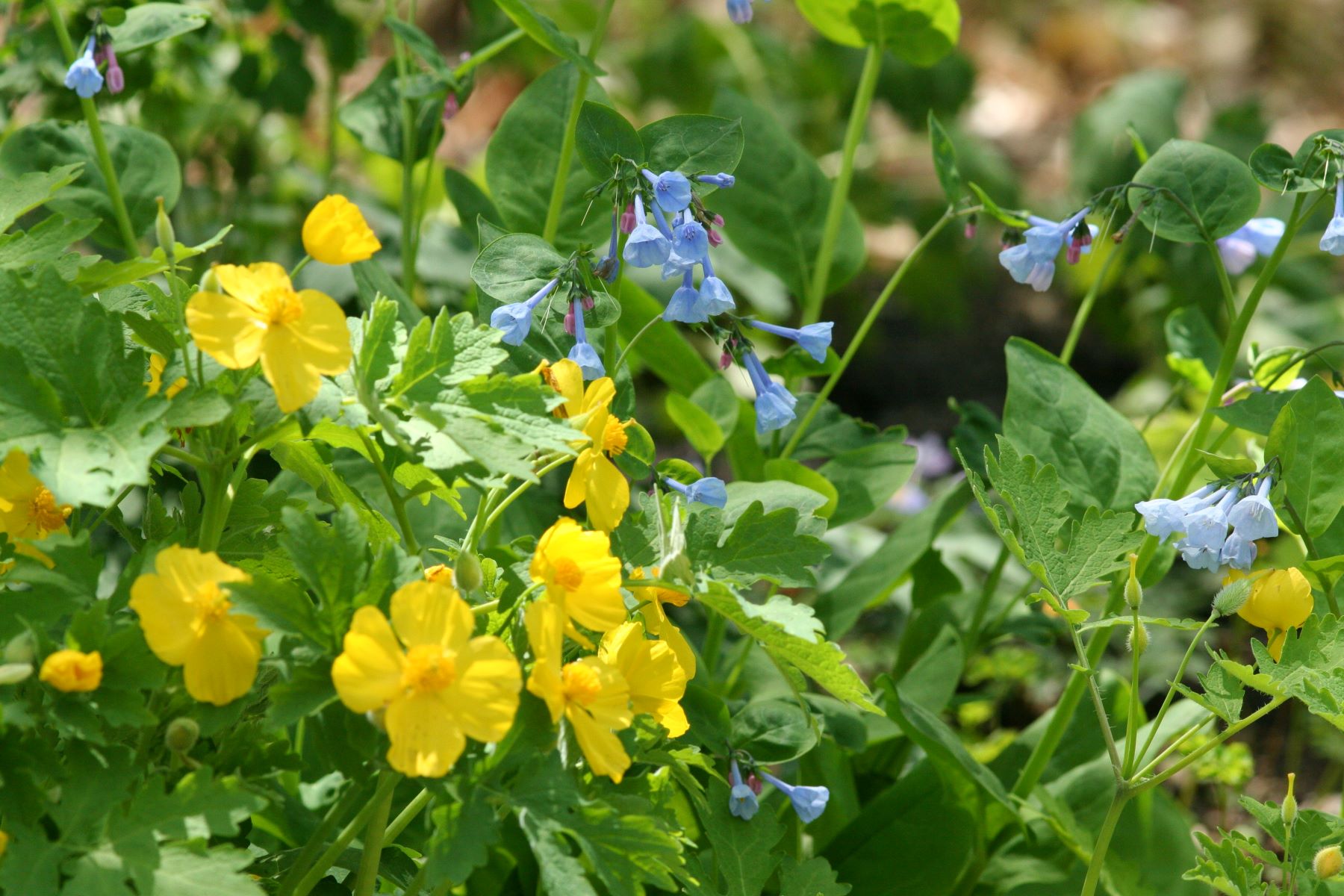
Creeping Phlox
This is a fast spreader that can be used as a fantastic native evergreen groundcover. In spring, beautiful flowers on long stalks top the green basal foliage. There are several varieties ranging in color from pink over blue to purple. We like the cultivars ‘Sherwood Purple’ (blue/purple) and ‘Home Fires’ (pink). Sherwood Purple is a bit more vigorous in our woodland than Home Fires.

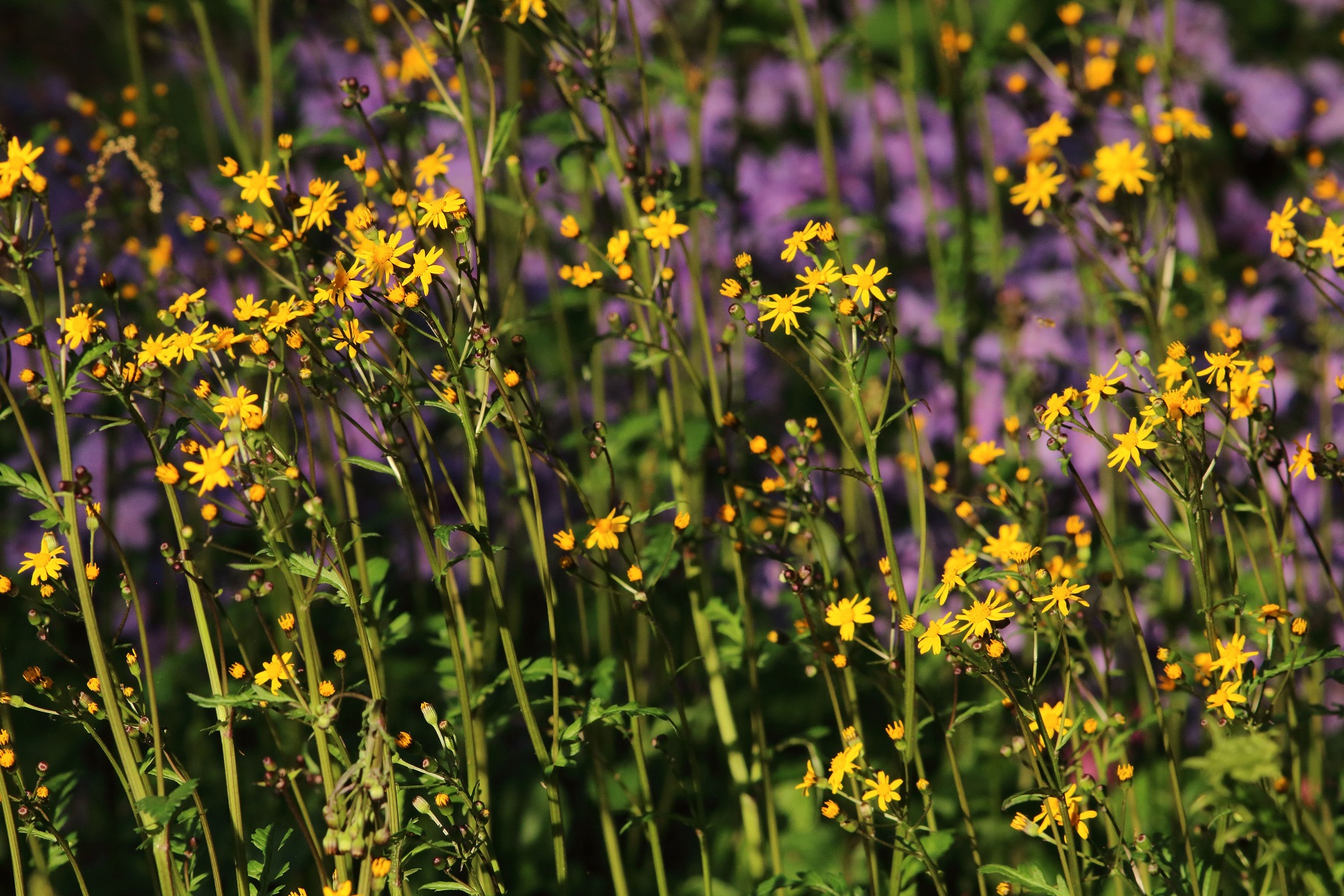

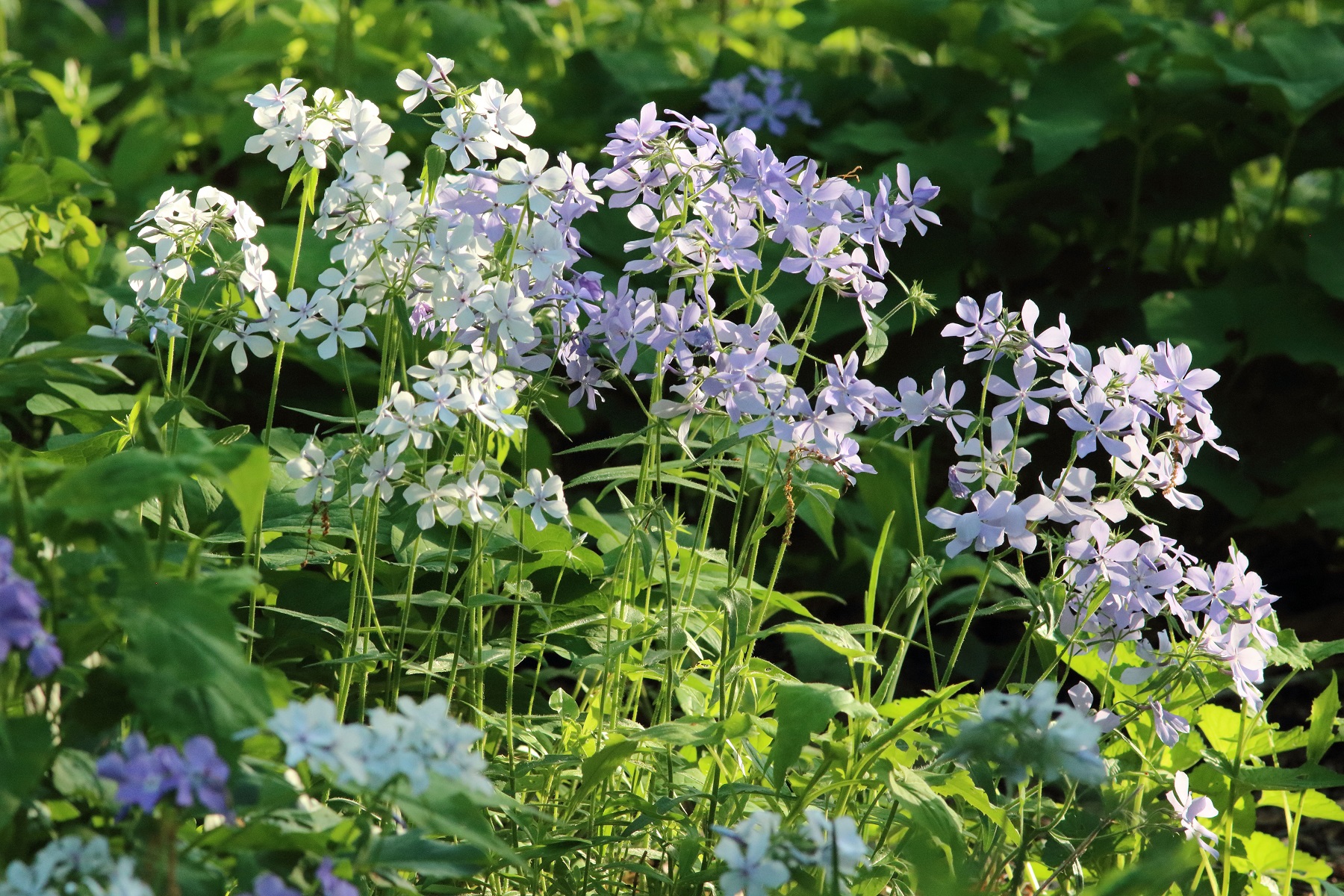
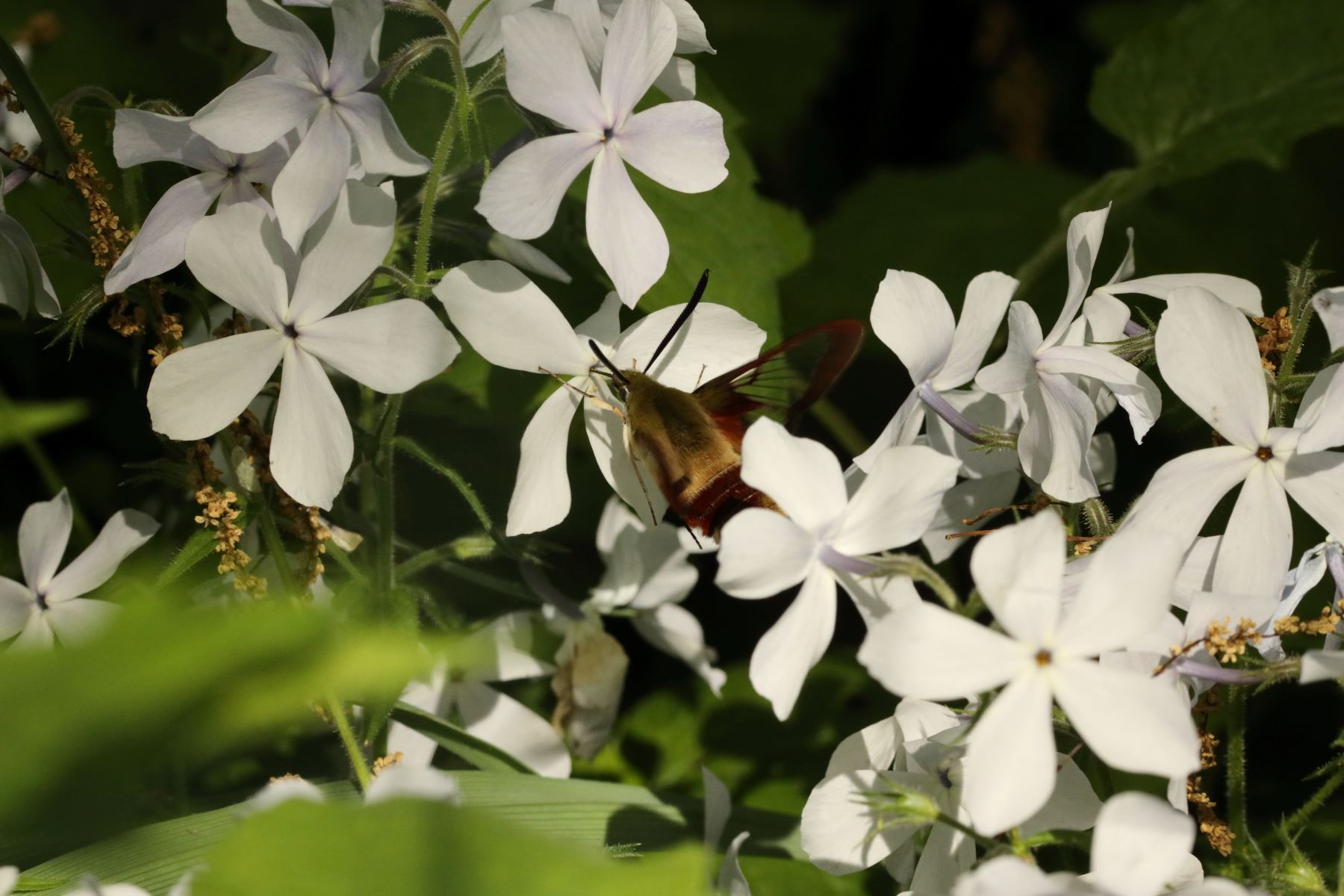

Mayapple



Jacob’s Ladder

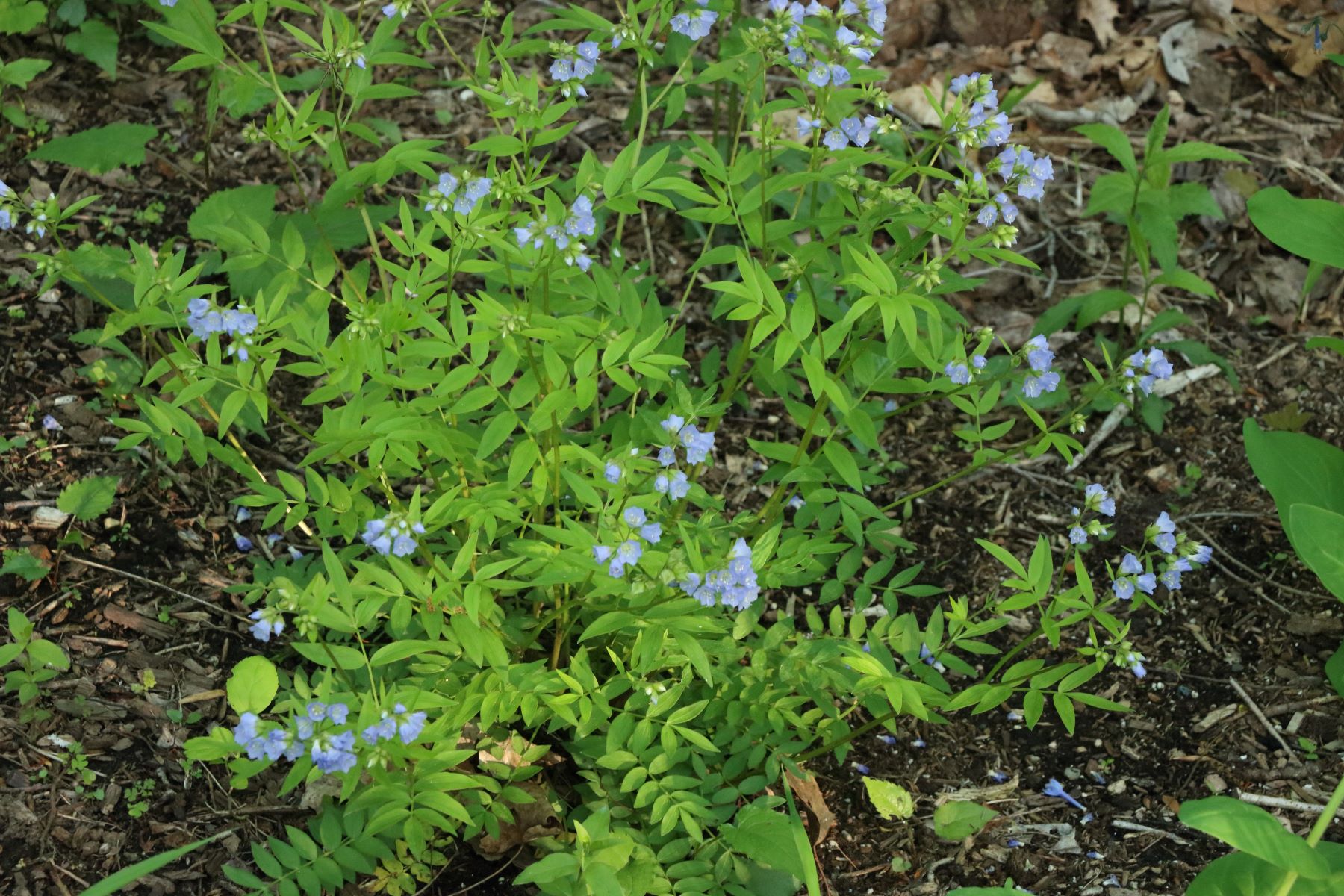

Cardinal Flower
This plant is essential for providing color and nectar in a wet woodland in late summer. The showy red blooms are cherished by hummingbirds. Basal foliage is evergreen and some excellent cultivars have dark almost purple foliage. By summer the plant can be close to 3 feet tall. It mixes well with a close relative, Great Blue Lobelia, with similar habit but blue flower clusters.


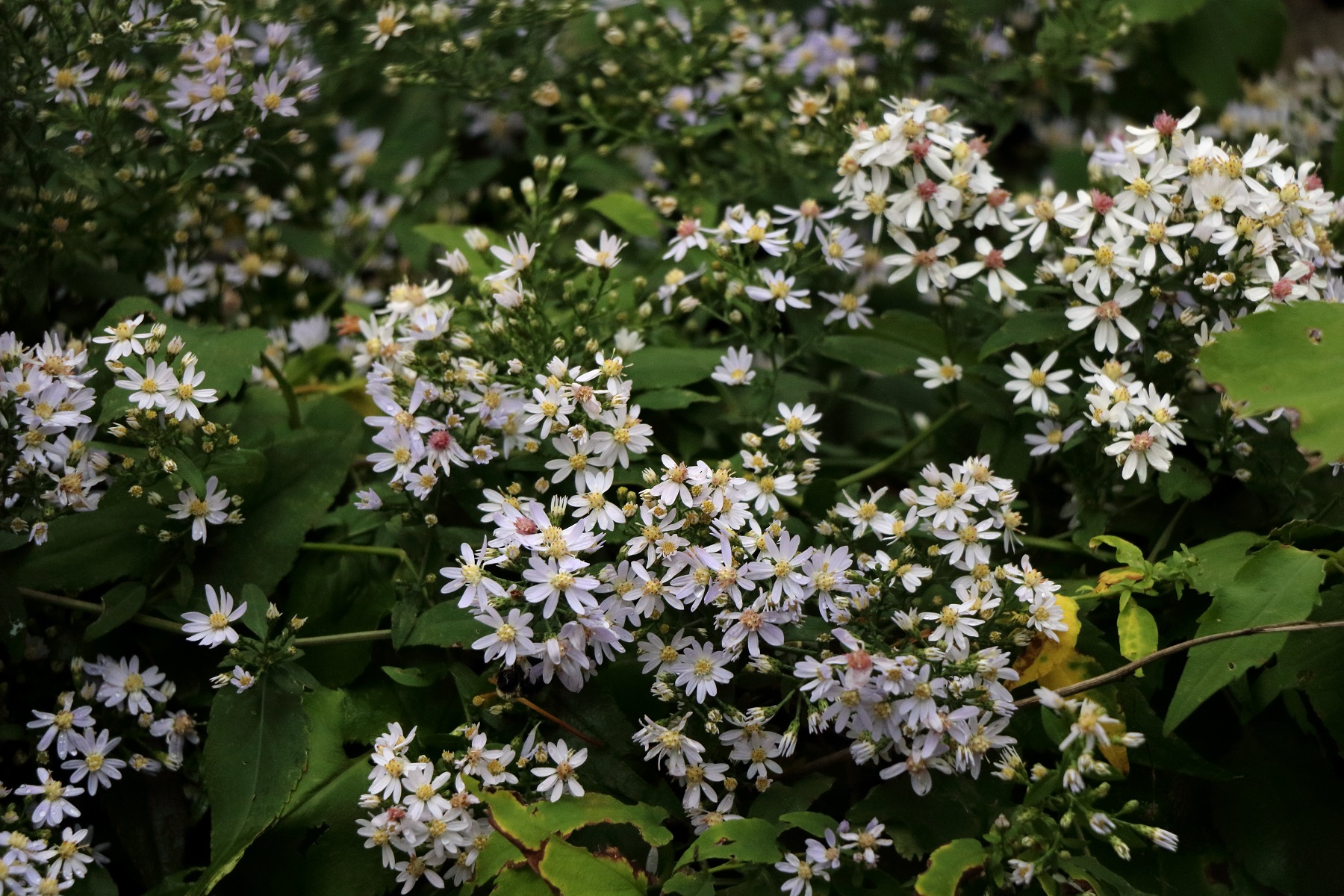
Foamflower: Low spreader, creamy white flower stalks
Dwarf Crested Iris: Low groundcover, brief blue-purple blooms
Bloodroot: Spring Ephemeral, beautiful foliage lasting till late summer
Spotted Geranium: Similar in habit to woodland phlox. Self-seeds.
Round-leaf Ragwort: Similar to Golden Ragwort with larger leaves, but maybe too vigorous for a garden setting.
Blue Wood Aster: Similar to White Wood Aster but even later blooming pale blue.
Bluntleaf Waterleaf: Interesting watermarks on young leaves. White flowers beneath leaves
Wild Sarsaparilla: Native woodland species, White flowers beneath leaves
Dwarf Bluestar: Excellent for massing on dry slopes in part shade
Great Blue Lobelia: Relative of Cardinal Flower with deep blue blooms.
Lace-leaved Loostrife: Spreader with yellow flowers and purple foliage
Virginia Creeper: Vine, climbs on support, but also covers ground nicely
Moss Phlox: Very low growing and more sun loving than creeping phlox
Prickly pear: Surprise a cactus! Great for part-sun rock gardens
Beebalms: Cover ground in part-sun locations
Short-toothed Mountain Mint: Cover ground in part-sun locations. Fragrant. Bee magnet.
Carolina Phlox: Cover ground in part-sun locations